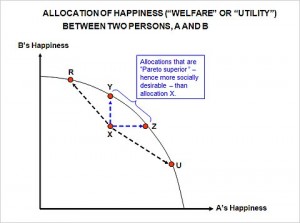For those of you who think passion is reserved for the humanities, check out this NOVA documentary on mathematician Andrew Wiles’ quest to solve Fermat’s last theorem. Wiles literally breaks down crying when thinking back to the moment when he thought he had it.
Fermat himself had said of the proposition, “I have a truly wonderful proof of this fact…. This margin is too small to contain it.” Though he probably didn’t, what his claim unleashed is extraordinary, with the Wiles’ proof being the last chapter.
Perhaps not.
Professor Sanerlib regularly shows this to his Math 300 class, but why should they have all the fun?
Absolutely awesome.
UPDATE: Alex Tabarrok at Marginal Revolution also spotted this and offers this:
The plainspoken Goro Shimura talking of his friend Yutaka Taniyama, “he was not a very careful person as a mathematician, he made a lot of mistakes but he made mistakes in a good direction.” “I tried to imitate him,” he says sadly, “but I found out that it is very difficult to make good mistakes.” Shimura continues to be troubled by his friend’s suicide in 1958.





 Some interesting interviews for those of you out cleaning the garage this weekend.
Some interesting interviews for those of you out cleaning the garage this weekend.